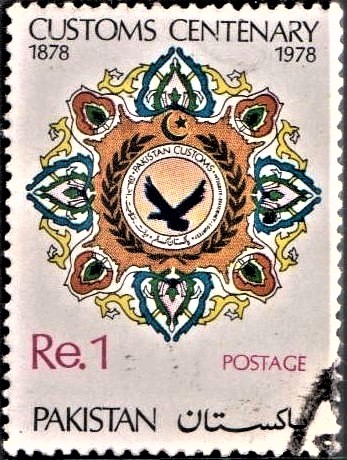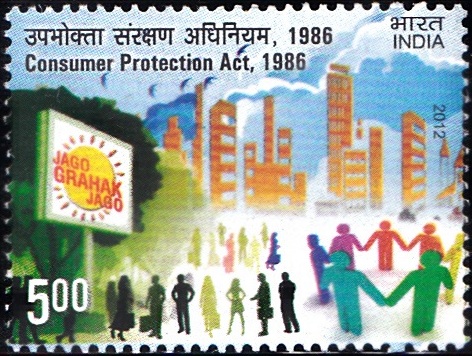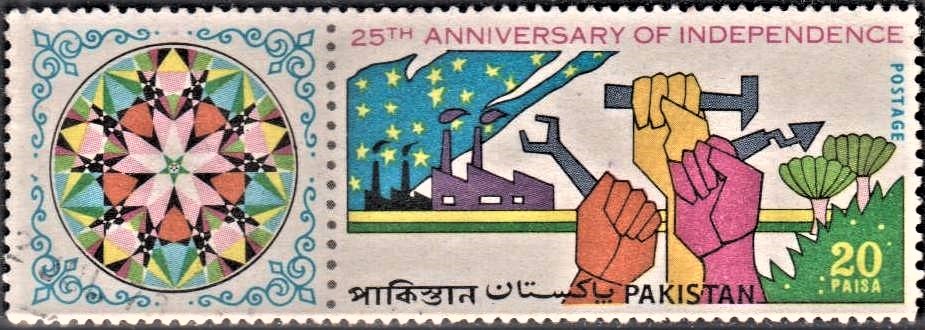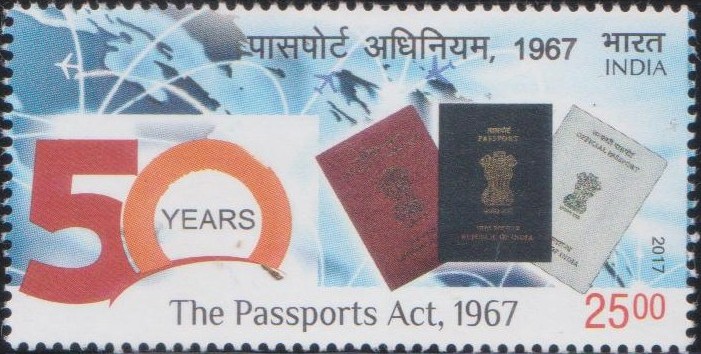
Indian Customs Act, 1962
A commemorative postage stamp on the 50 years of the Customs Act, 1962 :
 Issued by India
Issued by India
Issued on Jul 26, 2012
Issued for : Department of Posts is happy to issue a stamp to commemorate the ’50 Years of Customs Act, 1962′.
Credits :
Stamp / FDC / Cancellation : Alka Sharma
Type : Stamp, Mint Condition
Colour : Multi Colour
Denomination : 500 Paise
Stamps Printed : 0.45 Million (0.15 million for the proponent)
Printing Process : Photo Gravure
Printer : India Security Press, Nashik
About :
- The Central Board of Excise and Customs is celebrating 50 years of Customs Act in 2012. Historically, the concept of customs duty dates back to 3rd Century BC in Kautilya‘s Arthashastra. Later, in the British era, The Sea Customs Act, 1878, The Inland Bonded Warehouses Act, 1896, The Land Customs Act, 1924 and The Aircraft Act, 1934 were introduced. After independence, The Sea Customs Act, 1878 and The Land Customs Act, 1924 were consolidated in 1962 to form the present day Customs Act. It was notified on 23rd January, 1963 and came into existence on 1st February, 1963.
- After independence, customs duty rates were kept high mainly to protect and promote domestic industry. In addition, non tariff barriers in the form of restrictions, prohibition on import of a large number of items under Export Import Policy, were introduced. Due to this revenue from customs duty was very low but after the economic liberalization it has increased substantially and at present Customs is the second largest indirect tax contributor to the exchequer. Besides, revenue collection, the Customs administration also facilitates global trade and ensures compliance of various fiscal and non-fiscal laws and regulations. Over a period of time, the Customs administration has embraced technology, simplified the law and procedures and rationalized the duty structure.
- Indian Customs has taken various initiatives to secure the global supply chain as well as enhance trade facilitation. These include the introduction of Self Assessment, On-site Post Clearance audit, Authorized Economic Operator Programme, Accredited Planned Programme and Customs Tariff Interactive Website. Recently a Single Window Project was introduced to improve Customs clearance of international goods at borders. Customs Electronic Data Interchange (EDI) System which is functioning in 108 locations ensures transparency, accountability and expeditious clearance of international goods. Indian Customs Electronic Data Interchange Gateway (ICEGATE) portal connects about 15 external stakeholders – ports, custodians, banks etc. to facilitate message exchange for the clearance of goods.
- Indian Customs administration is globally recognized for its robust Risk Management System, introduced in 2005 and its expertise in operating a valuation database. As a member of the Policy Commission of the World Customs Organization, Indian Customs plays a leading role in projecting the aspirations of the entire Customs fraternity of the Asia Pacific region. National Academy of Customs, Excise and Narcotics, which is World Customs Organization recognized training institute, is actively engaged in capacity building of officers of Customs administrations in the region.
- The Customs department actively safeguards the economic frontiers of the country by detecting cases of commercial frauds and out-right smuggling at ports, airports, the land customs stations and inland container depots.
- Text : Based on the material provided by the proponent.
Subscribe
Login
0 Comments
Oldest




![Digital Customs - Progressive Engagement [Bangladesh Stamp 2016]](https://istampgallery.com/wp-content/uploads/2017/03/International-Custom-Day-2016.jpg)


